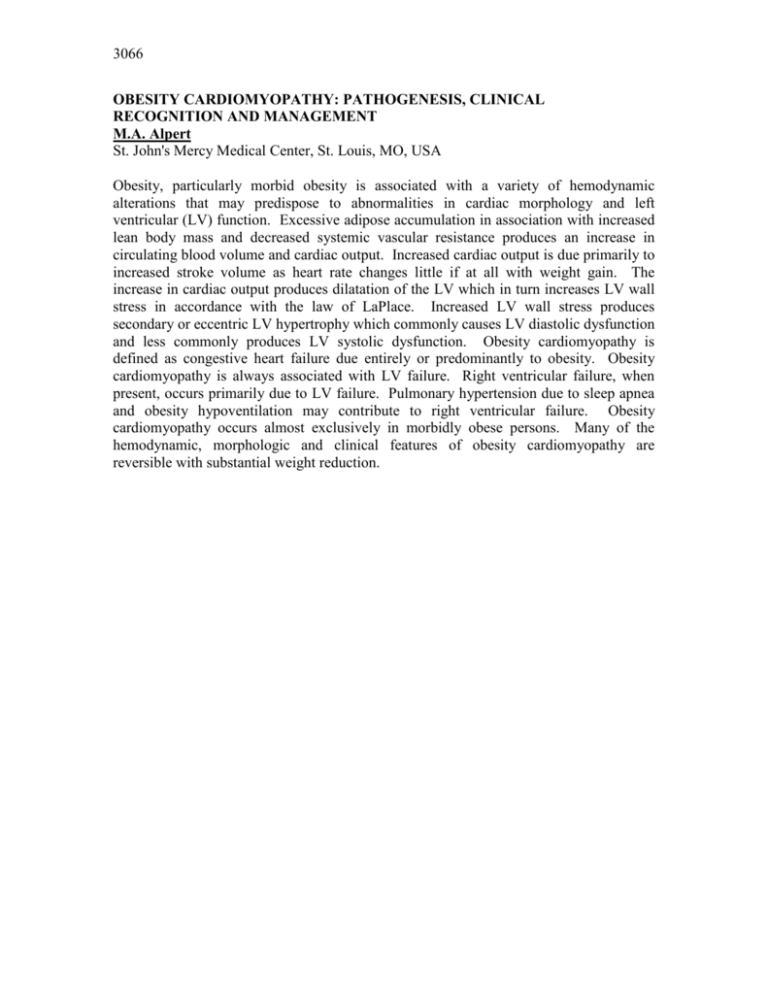OBESITY CARDIOMYOPATHY: PATHOGENESIS, CLINICAL
advertisement

3066 OBESITY CARDIOMYOPATHY: PATHOGENESIS, CLINICAL RECOGNITION AND MANAGEMENT M.A. Alpert St. John's Mercy Medical Center, St. Louis, MO, USA Obesity, particularly morbid obesity is associated with a variety of hemodynamic alterations that may predispose to abnormalities in cardiac morphology and left ventricular (LV) function. Excessive adipose accumulation in association with increased lean body mass and decreased systemic vascular resistance produces an increase in circulating blood volume and cardiac output. Increased cardiac output is due primarily to increased stroke volume as heart rate changes little if at all with weight gain. The increase in cardiac output produces dilatation of the LV which in turn increases LV wall stress in accordance with the law of LaPlace. Increased LV wall stress produces secondary or eccentric LV hypertrophy which commonly causes LV diastolic dysfunction and less commonly produces LV systolic dysfunction. Obesity cardiomyopathy is defined as congestive heart failure due entirely or predominantly to obesity. Obesity cardiomyopathy is always associated with LV failure. Right ventricular failure, when present, occurs primarily due to LV failure. Pulmonary hypertension due to sleep apnea and obesity hypoventilation may contribute to right ventricular failure. Obesity cardiomyopathy occurs almost exclusively in morbidly obese persons. Many of the hemodynamic, morphologic and clinical features of obesity cardiomyopathy are reversible with substantial weight reduction.






